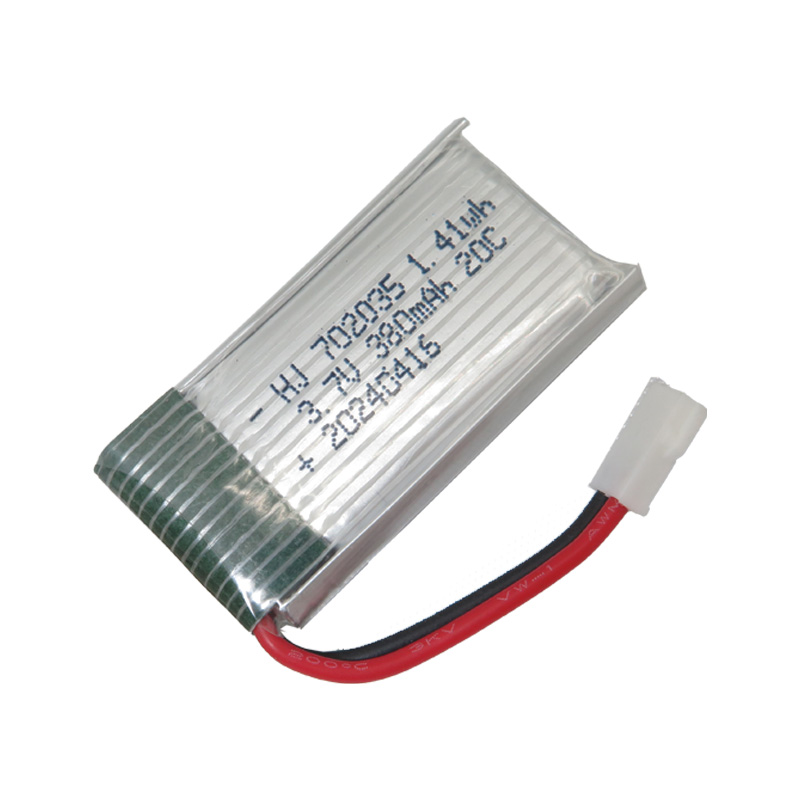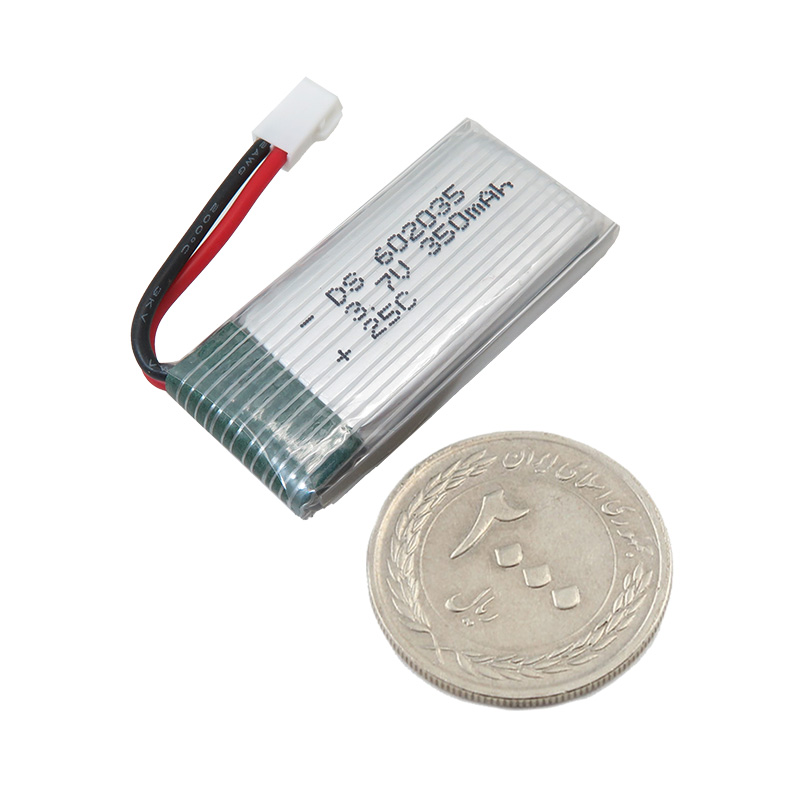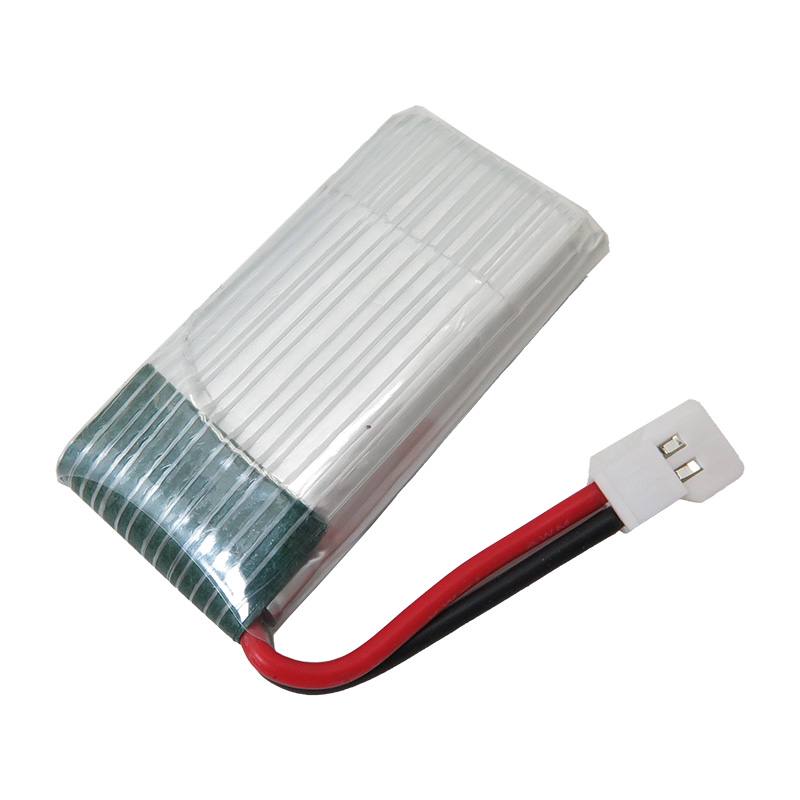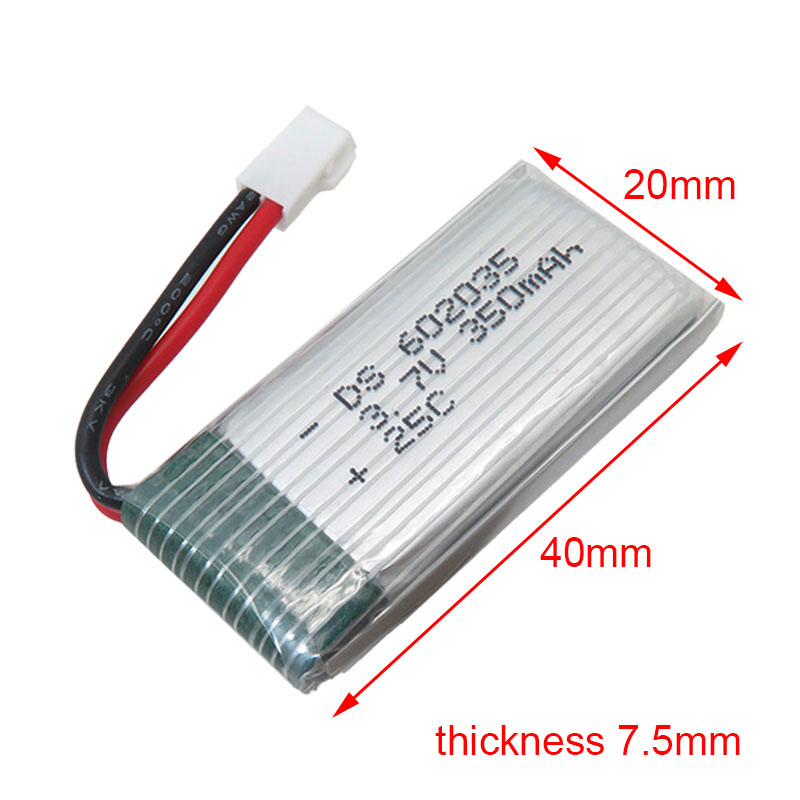موجودی در حال ارسال به انبار
-
150 عدد1404/07/12
5 از 5.0 با 29 رای
باتری لیتیوم یون ۳۸۰ میلیآمپر 3.7 ولت - باتری مخصوص کوادکوپتر و پهپاد های پروازی سبک
باتری لیتیوم پلیمر 3.7v با ظرفیت بالا و نرخ تخلیه مداوم 20C، انتخابی ایدهآل برای کاربرانی است که به دنبال یک منبع انرژی سبک، قدرتمند و بادوام هستند. این باتری لیتیومی 3.7ولت تک سل با بهرهگیری از تکنولوژی پیشرفته لیتیوم یون و ساختار الکترولیت پلیمری ، ولتاژ پایدار، طول عمر زیاد و عملکرد ایمن را برای انواع دستگاهها فراهم میکند.
وزن بسیار سبک (10 گرم) و ابعاد کوچک (40×20×7.5 میلیمتر) این محصول، آن را به گزینهای عالی برای فضاهای محدود و دستگاههای قابل حمل مانند کوادکوپترها، پهپادها، تجهیزات اندازهگیری، فرستندههای رادیویی و هندزفریهای بلوتوث تبدیل کرده است.
این باتری لیتیوم یون 380 میلیآمپر در دو مرحله شارژ جریان ثابت (CC) و ولتاژ ثابت (CV) شارژ میشود تا بیشترین کارایی و ایمنی را در طول زمان حفظ کند. با داشتن نرخ تخلیه انفجاری ۳۰C، این باتری میتواند جریانهای لحظهای بالا را بدون افت عملکرد تأمین کند.
باتری فوق با نام باتری لیتیومی 3.7 ولت 20C مخصوص انواع کوادکوپتر و پهپاد نیز شناخته میشود و به طور ویژه برای کاربردهای پروازی سبک طراحی شده است. اگر به دنبال یک باتری لیتیومی تک سل 3.7 ولت 380 میلیآمپر با کیفیت، قابل اعتماد و مناسب برای پروژههای حساس الکترونیکی هستید، این محصول بهترین انتخاب برای شما خواهد بود. با انتخاب این باتری، عملکرد بهتر، طول عمر بیشتر و امنیت بالاتری را در تجهیزات خود تجربه خواهید کرد.
کاربرد باتری لیتیوم پلیمر 3.7v:
- تامین انرژی برای کوادکوپترها و پهپادها
- استفاده در دستگاههای اندازهگیری و ابزارهای دقیق
- منبع انرژی برای هندزفریهای بلوتوث و تجهیزات صوتی بیسیم
- مناسب برای پروژههای الکترونیکی DIY و رباتیک
مشخصات باتری لیتیوم پلیمر 3.7v:
ظرفیت: 380 میلیآمپر ساعت
- نرخ تخلیه مداوم: 20C
- ولتاژ: 3.7 ولت
- باتری: تک سل
- ابعاد: طول 40، عرض20 ، ضخامت 7.5 میلیمتر
- وزن: 10 گرم
A lithium-ion battery or Li-ion battery (abbreviated as LIB) is a type of rechargeable battery. Lithium-ion batteries are commonly used for portable electronics and electric vehicles and are growing in popularity for military and aerospace applications. The charging procedures for single Li-ion cells, and complete Li-ion batteries, are slightly different.
A single Li-ion cell is charged in two stages: Constant current (CC) and Constant Voltage (CV).
The basic cell of a battery uses two pieces of a different metal – known as the cathode (positive) and the anode (negative). Internally, they are kept separate, but both are in contact with the same electrolyte where chemical reactions take place which creates the electrical charge. If the cathode and anode were connected to each other directly, the same chemical reaction would take place, but without any appliance to slow it down a massive amount of heat is generated which can lead to explosions or fires.
The life of a lithium-ion battery is typically defined as the number of full charge-discharge cycles to reach a failure threshold in terms of capacity loss or impedance rise. Manufacturers' datasheet typically uses the word "cycle life" to specify the lifespan in terms of the number of cycles to reach 80% of the rated battery capacity. The inactive storage of these batteries also reduces their capacity. Calendar life is used to represent the whole life cycle of battery involving both the cycle and inactive storage operations.
If a lithium-ion battery is damaged, crushed, or is subjected to a higher electrical load without having overcharge protection, then problems may arise. An external short circuit can trigger the battery explosion.
If the voltage of a lithium-ion cell drops below a certain level, it's ruined. Lithium-ion batteries age. They only last two to three years, even if they are sitting on a shelf unused. So do not "avoid using" the battery with the thought that the battery pack will last five years.
Features:
Capacity: 380 mA
Continuous Discharge Rate: 20C
Explosion Rate: 30C
Voltage: 3.7V
Battery: Single Cell
Size: Length 40mm, width 20mm, thickness 7.5mm
Weight: 10g



